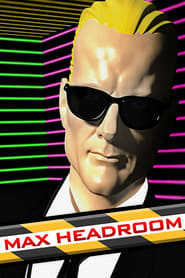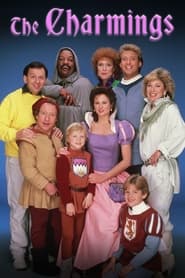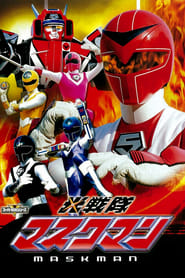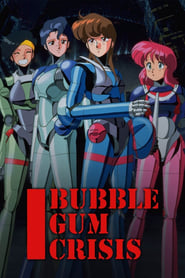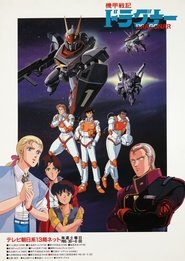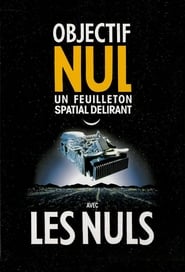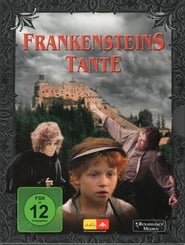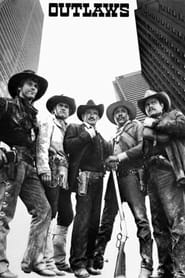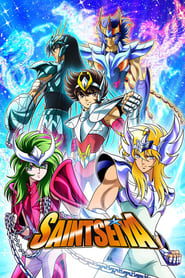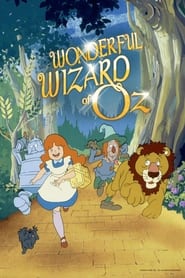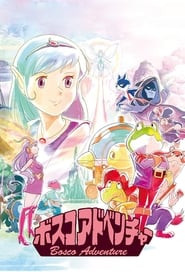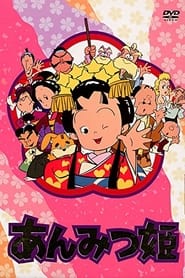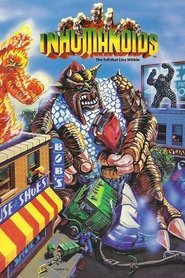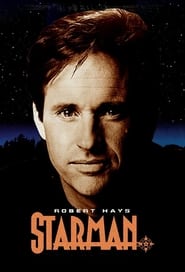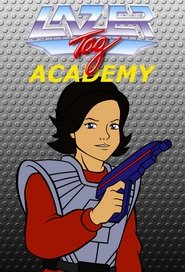New Sci Fi Fantasy TV Shows - Page 365
-
Max Headroom
1987
Max Headroom
1987
star 6.8Television networks battle one another in an unrelenting ratings war. Whoever controls the airwaves controls the dystopic world in which they broadcast. So when Network 23's star reporter, Edison Carter, uncovers a deadly secret that could shake up the station's dominion over its viewers, the only option is to eliminate Carter before he can make his story public. After Carter's "accident," his mind is uploaded to create the world's first self-aware, computer-generated TV host — Max Headroom! But will Max bow to his creators? Or will he be the key to his human alter ago bringing down a network superpower? -
The Charmings
1987
The Charmings
1987
star 4.8The Charmings is an American fantasy sitcom that aired from March 1987 to February 1988 on ABC. Based on the fairy tale Snow White, it chronicles Snow White and Prince Charming after they are transported in time from the Enchanted Forest to the 20th Century Los Angeles suburbs. -
Super Android Metalder
1987
star 8.6Choujinki Metalder is the sixth and shortest entry of the Metal Hero Series, running from March 16, 1987, to January 17, 1988, for only 39 episodes. It was the first series to air on Sundays instead of Mondays. Metalder bears many similarities to Toei's earlier program Android Kikaider, particularly in its themes, characters, and the hero's costume design. The action footage of Metalder was adaptated for the first two seasons of VR Troopers. On February 21, 2007, Toei released the complete Metalder TV series and film on a seven-disc DVD set. For distribution purposes, Toei refers to this television series as Metalder. -
Twilight Q
1987
Twilight Q
1987
star 6.5A Knot in Time — Reflection — Mayu found a camera floating in the ocean while she was on vacation. A very unusual camera. The film, mostly intact, reveals a picture of herself with a man she has never seen before. But that is not all. The unusual part is that this camera has not been made yet... and will not be made for another two years. And soon, Mayu finds herself swinging uncontrollably back and forth through time like a pendulum... Mystery Case — File 538 — A down-on-his-luck detective accepts the first case to come his way: surveillance of a man and a little girl. But who are they? And why do aeroplanes that fly over them turn into giant imperial carp? An investigator's normal methods do not apply when reality itself no longer applies... -
Hikari Sentai Maskman
1987
star 8.1Commander Sugata discovered the existence of the Royal Underground Empire Tube, a malignant force that desires to dominate the land, which is based underneath Japan. He recruits five young people, each one specializing in a style of martial arts, and teaches them in the ways of the mystical "Aura Power" energy. A year after he recruited and trained the Maskmen, Tube is ready to strike. -
Bubblegum Crisis
1987
Bubblegum Crisis
1987
star 7MegaTokyo 2033: Tokyo was left flattened as a result from a great earthquake. A new city, MegaTokyo, was then recreated due in no small part from the aid of a multi-million dollar company, Genom Corp. Genom created and mass-produced biomechanical creatures called Boomers to aid in the restoration of MegaTokyo. When the Boomers began to run out of control, the ADPolice at first tried to stop them, but they proved to be far more difficult to deal with than was first imagined. Under the ever looming Boomer threat, a group of four girls from varying degrees of society banded together. Calling themselves The Knight Sabers, they were the only ones with enough firepower and resourcefullness to defend the fledgling MegaTokyo from Genom and it's berserk Boomers. -
Metal Armor Dragonar
1987
Metal Armor Dragonar
1987
star 8A.D. 2087 - the United Lunar Empire Giganos wages war on the Earth Federation Military to take control of the planet and establish a "rebirth" of the human race. During an invasion of a colony by Giganos' forces, three civilian men stumble upon a trio of top-secret Metal Armor units called "Dragonars" and pilot them to combat the enemy forces. -
No Goal
1987
-
Frankenstein's Aunt
1987
Frankenstein's Aunt
1987
star 7.6Frankenstein's Aunt is the protagonist of three novels - two by Allan Rune Pettersson and a seven-episode TV miniseries based on the first one. The story is a humorous homage to the Universal Horror Frankenstein films. -
Night Voices
1987
Night Voices
1987
In 1987, ITV franchise HTV made an obscure anthology horror series, Night Voices, which has mostly vanished into the ether almost as surely as the wiped episodes of Late Night Horror. -
Outlaws
1986
Outlaws
1986
star 6.8Outlaws is a short-lived action-adventure American television series which aired Saturday nights on CBS. Five cowboys are sent forward through time from 1886 to 1986, and fight crime. The original series began as a 2-hour pilot movie, and was followed by eleven one-hour episodes. -
The Octopuses from the Second Floor
1986
star 7While on vacation with their bickering parents in Portugal, Eva and her little brother Johnny find two strange clots of clay on a polluted beach, who can speak and move on their own. They create two octopuses out of the blue and green material and take them home to Prague, soon discovering that their new pets attract electricity and other disasters. -
Saint Seiya
1986
Saint Seiya
1986
star 8.5Ages ago, the goddess Athena was served by fighters called Saints who channeled the power of the Cosmos within them. Now a youth named Seiya has trained to become a Saint himself by earning the mystical Cloth of Pegasus. He is joined by other Saints with Cloths of their own to fight for Athena. -
Worlds Beyond
1986
Worlds Beyond
1986
star 5.2A British TV anthology series based on real-life supernatural experiences described in archival documents from the Society for Psychical Research that was broadcast on ITV from 1986 to 1988. A book was also released to accompany the series. -
The Wonderful Wizard of Oz
1986
star 8.2A young girl named Dorothy has gone to live with her grandparents on their small farm. One day when Dorothy is left alone in the house a tornado appears. Dorothy fails to get to the basement in time, and the entire house is picked up and transported to a magical land, falling on and killing a wicked witch. There she is informed by a good witch that she must travel to the Capital of Emerald and meet a great magician who may be able to help her find a way home. Along the way she makes some incredible friends and sees many strange and fantastic things. -
Bosco Adventure
1986
Bosco Adventure
1986
star 3The Fountain of Life is the source of all life forces in the Bosco World. Princess Apricot, who is supposed to become Queen of Fountainland-the Guardian of the Fountain of Life-is kidnapped by villains who aim to rule the Bosco World. If Princess Apricot can't take the queen's throne by the next solar eclipse, the Fountain of Life will dry up. The animals living in the forest of Bosco, including Frog, Otter and Tortoise, decide to help Princess and take her to Fountainland in order to protect their peaceful life in the Bosco World. So begins the journey in a balloon full of dreams, hope, adventures, and love! -
Anmitsu Hime: From Amakara Castle
1986
Anmitsu Hime is a manga series by Shosuke Kurakane. The story was originally produced in 1949-1955. In 1986-1987, Izumi Takemoto retold the original manga series, releasing it under the same title. -
Inhumanoids
1986
Inhumanoids
1986
star 8.1Inhumanoids was an animated series and Hasbro toy property in 1986. In the tradition of other Hasbro properties such as Transformers and G.I. Joe, the show was produced by Sunbow and Marvel Productions and animated in Japan by Toei Animation. Inhumanoids tells the story of the scientist-hero group, Earth Corps, as they battle a trio of subterranean monsters called the Inhumanoids with the aid of elemental beings, the Mutores. -
Starman
1986
Starman
1986
star 6.8Starman is an American science fiction television series, starring Robert Hays and Christopher Daniel Barnes and continuing the story from John Carpenter's 1984 film. The series ran on the ABC network from September 19, 1986 to May 2, 1987. The series was an adaptation and sequel to a movie of the same name produced in 1984. -
Lazer Tag Academy
1986
Lazer Tag Academy
1986
star 6.8Lazer Tag Academy is an animated television series inspired by Worlds of Wonder's Lazer Tag that was created by Ruby-Spears Productions. The series aired on NBC from September 13 to December 6, 1986. It was later shown in reruns under the new title Lazer Patrol on the Sci Fi Channel as part of Sci Fi Cartoon Quest.
 Netflix
Netflix
 Amazon Prime Video
Amazon Prime Video
 Apple iTunes
Apple iTunes
 Apple TV Plus
Apple TV Plus
 Disney Plus
Disney Plus
 Google Play Movies
Google Play Movies
 Paramount Plus
Paramount Plus
 Hulu
Hulu
 HBO Max
HBO Max
 YouTube
YouTube
 fuboTV
fuboTV
 Peacock
Peacock
 Peacock Premium
Peacock Premium
 Amazon Video
Amazon Video
 The Roku Channel
The Roku Channel
 AMC+
AMC+
 Kocowa
Kocowa
 Hoopla
Hoopla
 The CW
The CW
 Vudu
Vudu
 Starz
Starz
 Showtime
Showtime
 PBS
PBS
 Pantaflix
Pantaflix
 FXNow
FXNow
 Tubi TV
Tubi TV
 Kanopy
Kanopy
 Comedy Central
Comedy Central
 Crunchyroll
Crunchyroll
 Microsoft Store
Microsoft Store
 Redbox
Redbox
 Sun Nxt
Sun Nxt
 ABC
ABC
 DIRECTV
DIRECTV
 Crackle
Crackle
 Fandor
Fandor
 Plex
Plex
